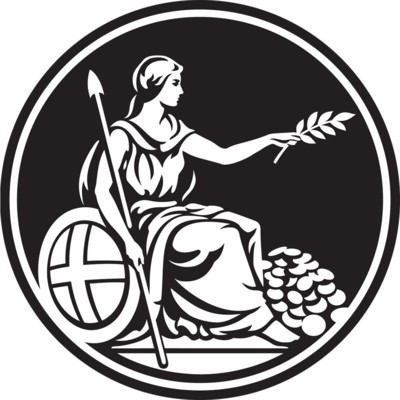The UK’s Economic Tightrope: Balancing Cuts and Growth
March 27, 2025, 3:43 am

Location: United Kingdom, England, London
Employees: 11-50
Founded date: 2010

Location: United Kingdom, England, London
Employees: 1001-5000
Founded date: 1694
The UK is walking a tightrope. On one side, the need for fiscal responsibility. On the other, the urgent demand for economic growth. Chancellor Rachel Reeves is at the helm, navigating a stormy sea of budget cuts and inflationary pressures. Her recent Spring Statement reveals a government grappling with stagnation and rising costs, all while trying to maintain a semblance of stability.
Reeves’ latest announcement is a mixed bag. She outlined billions in welfare spending cuts, a move designed to plug a growing budget deficit. The UK economy is stalling, and inflation remains stubbornly high. The Chancellor’s plan aims to rein in public spending while boosting investment in key areas. But can she truly balance these competing demands?
The Office for Budget Responsibility (OBR) has downgraded the UK’s growth forecast for 2025, slashing it from 2% to a mere 1%. This news is a bitter pill for Reeves, who insists that her fiscal rules are non-negotiable. She believes that reducing debt and borrowing is essential for future investment in public services. Yet, the path she has chosen is fraught with peril.
Welfare cuts are projected to save £4.8 billion. This is a significant sum, but it comes at a cost. Critics argue that reducing support for the most vulnerable will only exacerbate social inequalities. The Labour government, once a champion of the working class, now faces accusations of abandoning its core values. The civil service is also under pressure, with calls for a 15% reduction in administrative costs by 2030. This could lead to job losses and a decline in public service efficiency.
Reeves is trying to paint a picture of hope. She claims that her reforms will lead to a surge in housebuilding, reaching a forty-year high. But can we trust these promises? The reality is that the UK’s economic landscape is shifting. The Chancellor warns of an “uncertain world,” where external factors, such as global trade tensions and inflationary pressures, loom large.
The OBR’s forecasts paint a grim picture. While it predicts a slight recovery in growth for 2026 and beyond, the immediate future looks bleak. The UK is not just facing a temporary dip; it’s grappling with structural issues that could hinder long-term growth. The economy is like a ship caught in a storm, with no clear direction.
Reeves’ commitment to her fiscal rules is commendable, but it may also be her Achilles' heel. By tying her hands with stringent spending targets, she risks stifling growth. The business community is already feeling the pinch. Industry leaders are concerned that the government’s fiscal plans could weigh heavily on investment and job creation. The fear is palpable: will the UK become a stagnant economy, unable to compete on the global stage?
The Chancellor’s strategy hinges on tax reforms and cracking down on tax avoidance. She believes that these measures will bolster Treasury revenues. However, the reality is that higher taxes can deter investment. Businesses need certainty and stability to thrive. If the government continues to raise the tax burden, it may drive companies away, further hampering growth.
The situation is complicated by rising interest rates. The Bank of England has warned of a temporary spike in inflation, which could lead to higher borrowing costs. This is a double-edged sword. While it may help curb inflation in the long run, it also places additional strain on public finances. The UK is caught in a vicious cycle, where each decision seems to lead to more challenges.
Reeves’ Spring Statement is a reflection of the broader economic landscape. It’s a balancing act, where every cut and every investment must be weighed carefully. The Chancellor is trying to walk a fine line between fiscal responsibility and economic growth. But as the OBR’s forecasts suggest, the path ahead is fraught with uncertainty.
Critics argue that the OBR’s role has become too powerful. By relying on independent forecasts, Reeves has limited her own ability to make bold decisions. The call for abolishing the OBR is gaining traction among some economists. They argue that politicians, not unelected bodies, should steer the economic ship. The irony is palpable: Reeves has strengthened the OBR’s position, only to find herself constrained by its forecasts.
The debate over the OBR’s role raises important questions about accountability. Politicians can be voted out; quango members cannot. If the OBR’s forecasts prove inaccurate, who will be held responsible? The public deserves transparency and accountability in economic decision-making.
As the UK navigates these turbulent waters, the stakes are high. The government must find a way to stimulate growth while managing public finances. The road ahead is rocky, but the destination is clear: a stable, prosperous economy that works for everyone.
In conclusion, the UK’s economic future hangs in the balance. Chancellor Rachel Reeves faces a daunting challenge. She must cut spending while fostering growth. The decisions made today will shape the nation’s economic landscape for years to come. The question remains: can she find the right balance? Only time will tell.
Reeves’ latest announcement is a mixed bag. She outlined billions in welfare spending cuts, a move designed to plug a growing budget deficit. The UK economy is stalling, and inflation remains stubbornly high. The Chancellor’s plan aims to rein in public spending while boosting investment in key areas. But can she truly balance these competing demands?
The Office for Budget Responsibility (OBR) has downgraded the UK’s growth forecast for 2025, slashing it from 2% to a mere 1%. This news is a bitter pill for Reeves, who insists that her fiscal rules are non-negotiable. She believes that reducing debt and borrowing is essential for future investment in public services. Yet, the path she has chosen is fraught with peril.
Welfare cuts are projected to save £4.8 billion. This is a significant sum, but it comes at a cost. Critics argue that reducing support for the most vulnerable will only exacerbate social inequalities. The Labour government, once a champion of the working class, now faces accusations of abandoning its core values. The civil service is also under pressure, with calls for a 15% reduction in administrative costs by 2030. This could lead to job losses and a decline in public service efficiency.
Reeves is trying to paint a picture of hope. She claims that her reforms will lead to a surge in housebuilding, reaching a forty-year high. But can we trust these promises? The reality is that the UK’s economic landscape is shifting. The Chancellor warns of an “uncertain world,” where external factors, such as global trade tensions and inflationary pressures, loom large.
The OBR’s forecasts paint a grim picture. While it predicts a slight recovery in growth for 2026 and beyond, the immediate future looks bleak. The UK is not just facing a temporary dip; it’s grappling with structural issues that could hinder long-term growth. The economy is like a ship caught in a storm, with no clear direction.
Reeves’ commitment to her fiscal rules is commendable, but it may also be her Achilles' heel. By tying her hands with stringent spending targets, she risks stifling growth. The business community is already feeling the pinch. Industry leaders are concerned that the government’s fiscal plans could weigh heavily on investment and job creation. The fear is palpable: will the UK become a stagnant economy, unable to compete on the global stage?
The Chancellor’s strategy hinges on tax reforms and cracking down on tax avoidance. She believes that these measures will bolster Treasury revenues. However, the reality is that higher taxes can deter investment. Businesses need certainty and stability to thrive. If the government continues to raise the tax burden, it may drive companies away, further hampering growth.
The situation is complicated by rising interest rates. The Bank of England has warned of a temporary spike in inflation, which could lead to higher borrowing costs. This is a double-edged sword. While it may help curb inflation in the long run, it also places additional strain on public finances. The UK is caught in a vicious cycle, where each decision seems to lead to more challenges.
Reeves’ Spring Statement is a reflection of the broader economic landscape. It’s a balancing act, where every cut and every investment must be weighed carefully. The Chancellor is trying to walk a fine line between fiscal responsibility and economic growth. But as the OBR’s forecasts suggest, the path ahead is fraught with uncertainty.
Critics argue that the OBR’s role has become too powerful. By relying on independent forecasts, Reeves has limited her own ability to make bold decisions. The call for abolishing the OBR is gaining traction among some economists. They argue that politicians, not unelected bodies, should steer the economic ship. The irony is palpable: Reeves has strengthened the OBR’s position, only to find herself constrained by its forecasts.
The debate over the OBR’s role raises important questions about accountability. Politicians can be voted out; quango members cannot. If the OBR’s forecasts prove inaccurate, who will be held responsible? The public deserves transparency and accountability in economic decision-making.
As the UK navigates these turbulent waters, the stakes are high. The government must find a way to stimulate growth while managing public finances. The road ahead is rocky, but the destination is clear: a stable, prosperous economy that works for everyone.
In conclusion, the UK’s economic future hangs in the balance. Chancellor Rachel Reeves faces a daunting challenge. She must cut spending while fostering growth. The decisions made today will shape the nation’s economic landscape for years to come. The question remains: can she find the right balance? Only time will tell.